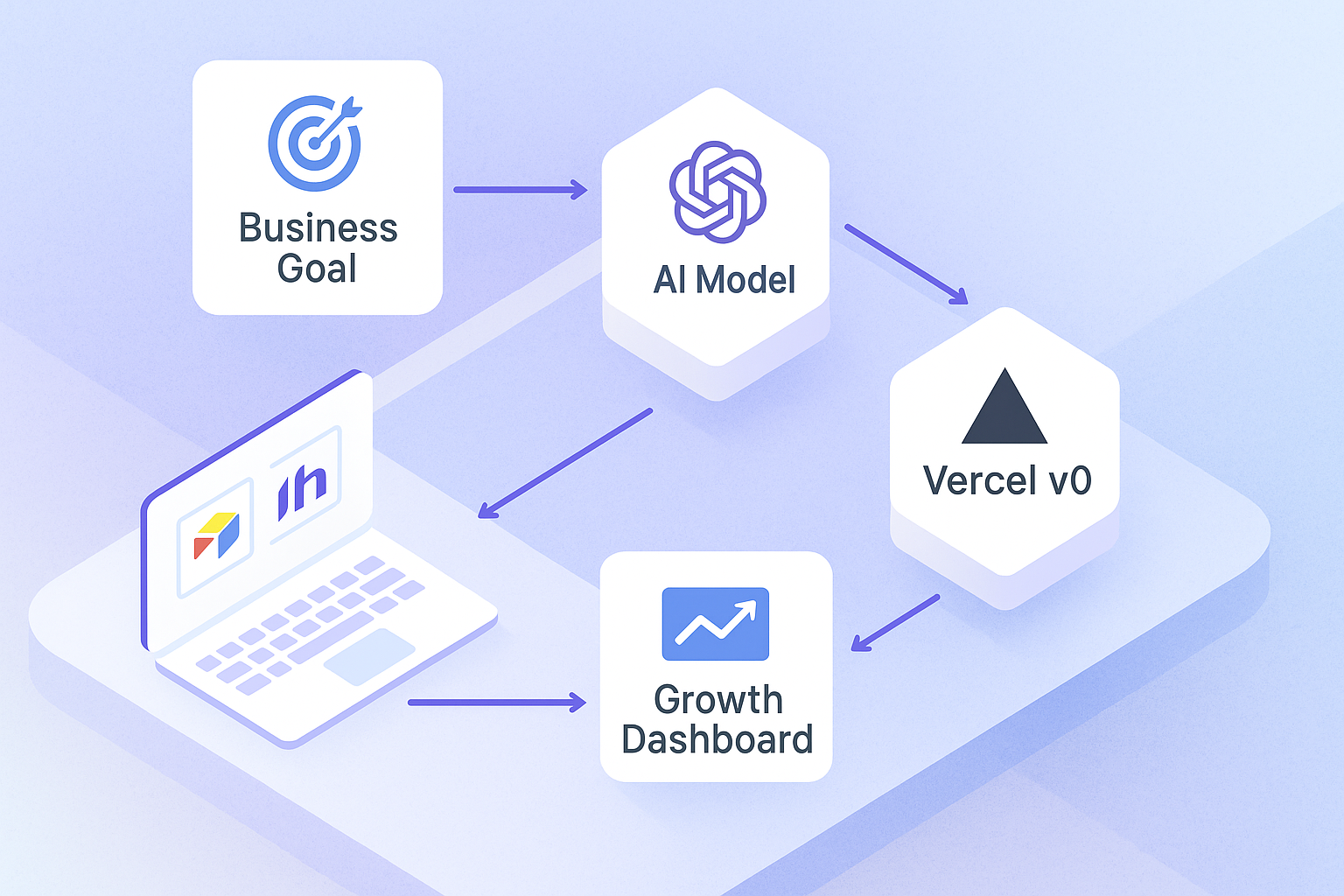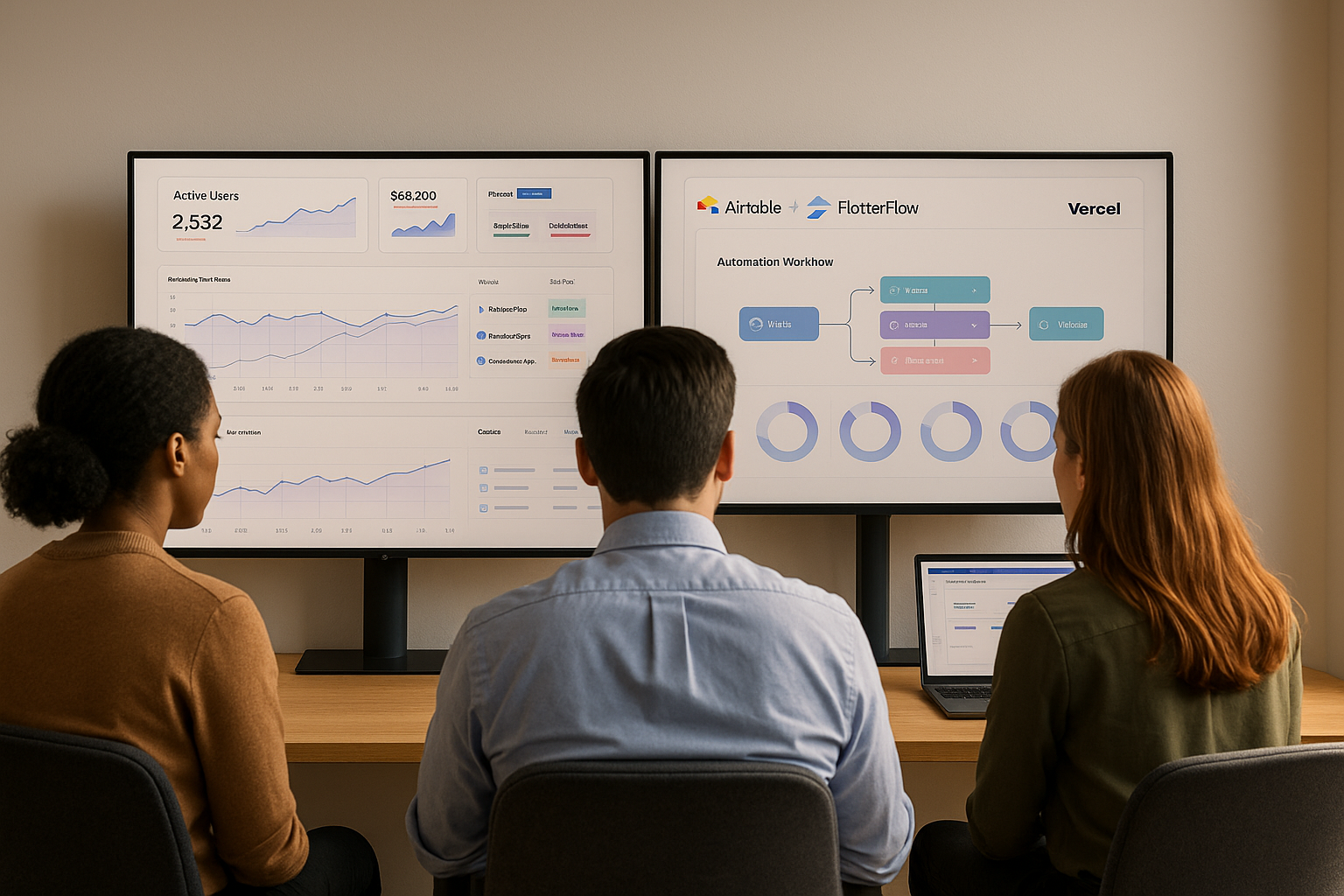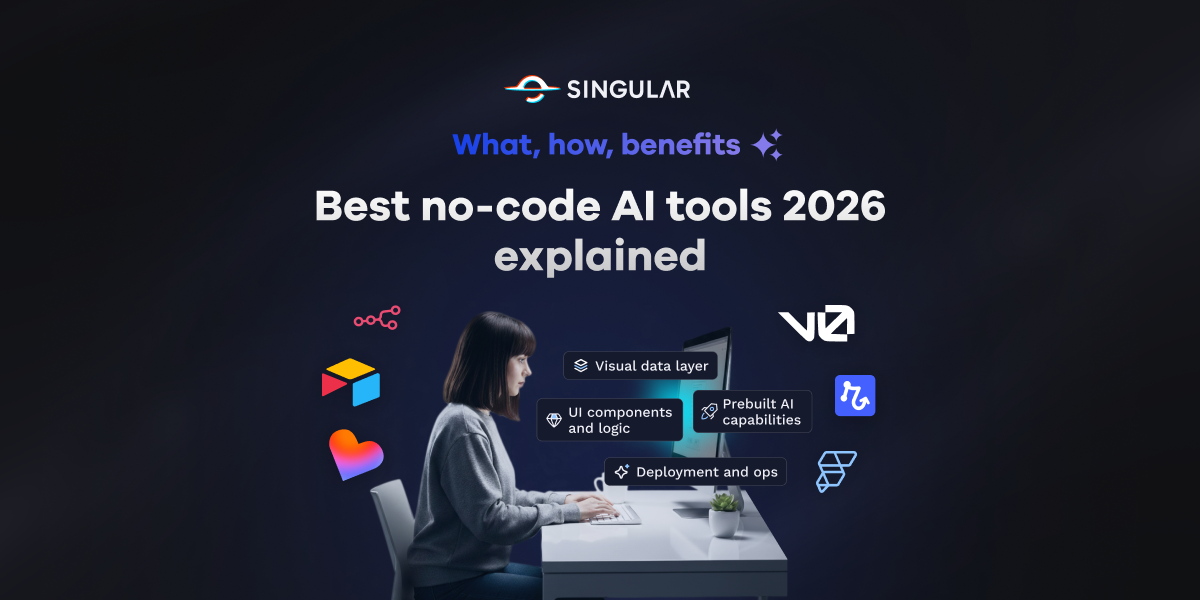How to Get Started with AI for SMBs

Why AI Adoption Matters for SMBs
Artificial Intelligence (AI) is redefining how companies operate — not just for enterprises, but for small and mid-sized businesses as well. What once required teams of data scientists and large budgets is now achievable with affordable, intuitive, and no-code tools.
In 2025, SMBs have a unique advantage: agility. They can experiment, adapt, and implement AI faster than large organizations burdened by legacy systems.

The opportunity is clear — AI can automate routine work, improve marketing, enhance decision-making, and help SMBs scale sustainably.
But most business owners don’t know where to begin.
At Singular Innovation, we help SMBs turn curiosity into capability — building AI systems that are simple, measurable, and aligned with real business goals.
1. Start with Strategy, Not Software
Before signing up for any AI platform, define why you’re adopting it.
AI is a means to an end — not the end itself. Successful SMBs start by identifying bottlenecks and measurable outcomes.
Ask questions like:
- Which tasks are repetitive but essential?
- What customer pain points take too long to resolve?
- Where do I lose time that could be automated or predicted?
For example, a local logistics company might use AI to predict delivery times and reduce fuel costs. A marketing agency might automate reporting, saving hours weekly.
By mapping your pain points to AI use cases, you’ll ensure your investment drives value — not confusion.
2. Identify Key Processes to Automate
AI can improve virtually every department in an SMB. However, the fastest results usually come from marketing, operations, sales, and customer service.

a) Marketing & Lead Generation
AI can help generate personalized content, optimize ads, and score leads automatically.
Use Jasper, ChatGPT, or HubSpot AI to produce content or segment audiences efficiently.
(Internal link suggestion: AI-Powered App Creation)
b) Sales & Customer Support
Deploy AI chatbots on your website to handle FAQs or collect leads 24/7.
Tools like Intercom AI or Tidio integrate seamlessly with CRMs such as HubSpot or Pipedrive, saving time and increasing conversions.
c) Operations & Management
AI-driven dashboards in Airtable or Notion AI can forecast workload, track projects, and automate inventory management.
Combine this with Make or Zapier to connect systems and trigger real-time updates.
d) Finance & Administration
Accounting tools like QuickBooks AI automatically categorize expenses, detect anomalies, and forecast cash flow.
For repetitive workflows, use Zapier to sync invoices and payment confirmations across tools.
3. Choose the Right Tools (Start Simple, Grow Fast)
You don’t need an engineering background to use AI effectively.
Start with no-code platforms that let you integrate automation directly into your existing operations.
Here’s a starter AI stack for SMBs (used frequently at Singular Innovation):
Start where automation will save the most time — not where it looks most advanced.
Singular Innovation often guides clients through AI tool selection, ensuring that the chosen stack aligns with measurable business outcomes and available resources.
4. Pilot, Measure, and Scale
Start with one use case.
Don’t automate everything at once. Begin with a process that has clear inputs, measurable outputs, and minimal risk — such as automating reports or responding to customer inquiries.
Measure outcomes.
Track metrics like:
- Hours saved per week
- Reduction in manual errors
- Faster response times
- Increased lead conversion
Even small wins compound over time.
Iterate and expand.
Once you prove success, apply AI to more areas.
For example:
- Start with email automation → expand to campaign optimization
- Start with chatbot → expand to CRM integration
Tools like GA4, Airtable Analytics, and Looker Studio help quantify the impact.
5. Avoid Common Mistakes When Adopting AI
Adopting AI is exciting — but enthusiasm without structure leads to frustration.
Here are the mistakes SMBs most often make:
- Chasing trends instead of results.
Focus on business impact, not buzzwords. - Starting without clean data.
AI relies on data integrity. Fix data entry and consistency first. - Automating too much, too soon.
Test one workflow, refine, then scale. - Neglecting team training.
Employees must understand how to use and supervise AI tools effectively. - Skipping documentation.
Always document processes and outcomes for repeatability and compliance.
AI should simplify your business — not complicate it.
6. The Human + AI Partnership
AI is not here to replace your team — it’s here to augment it.
Machines bring speed, precision, and availability.
Humans bring context, creativity, and ethics.

At Singular Innovation, we emphasize human supervision and hybrid workflows — where AI handles repetitive actions and humans ensure strategic alignment.
Imagine AI writing product descriptions while your team refines messaging and branding.
Or AI automating data entry while your operations lead reviews performance metrics.
This combination creates AI-assisted creativity, where small teams achieve enterprise-level productivity.
7. How Singular Innovation Helps SMBs Implement AI
Singular Innovation helps small and mid-sized businesses build, deploy, and supervise AI-driven systems without hiring a tech department.
Our approach is designed for scalability and clarity:
- AI Readiness Assessment – We analyze your workflows and identify high-impact automation areas.
- Workflow Design – Using tools like Airtable, Make, and FlutterFlow, we map a system tailored to your business goals.
- Implementation & Deployment – We deploy securely using Vercel v0 and integrate AI models safely.
- Training & Supervision – Your team learns how to operate, adjust, and scale with AI.
By combining automation and human oversight, we ensure results that are both efficient and sustainable.
FAQ: Getting Started with AI for SMBs
1. Is AI too expensive for small businesses?
Not anymore. Most no-code and automation tools start under $50–100/month, making them ideal for startups and SMBs.
2. Do I need technical expertise?
No. Tools like Airtable, FlutterFlow, and Make allow anyone to automate processes visually.
3. What’s the best first AI project?
Start with automating repetitive, rule-based tasks like data entry, email responses, or lead tracking.
4. How long does it take to see results?
Most SMBs see measurable time and cost savings within the first 30–60 days after implementation.
5. Can AI replace my employees?
No — it enhances them. AI eliminates busywork so your team can focus on creative and strategic growth.
6. How do I scale responsibly?
Maintain human review, document your workflows, and audit performance regularly.
Start Small, Think Long-Term
AI adoption isn’t about robots or hype — it’s about unlocking growth through smarter systems.
By starting small, choosing the right tools, and maintaining human oversight, SMBs can achieve efficiency once reserved for large enterprises.
At Singular Innovation, we help companies turn automation into advantage — through secure, no-code, AI-supervised solutions that scale as you grow.
Now is the best time for SMBs to embrace AI — not tomorrow, not “someday.”
The future of business automation is already here.
Ready to make AI work for your business?
Join our AI Implementation Webinar to learn how SMBs are using Airtable, FlutterFlow, and Vercel v0 to automate processes, generate insights, and scale — no code required.
👉 Contact us to start building your first AI workflow today.
This article was developed with the assistance of AI tools (e.g., huminize.io) and reviewed by the Singular Innovation team for accuracy and context.
Heading
Dolor enim eu tortor urna sed duis nulla. Aliquam vestibulum, nulla odio nisl vitae. In aliquet pellentesque aenean hac vestibulum turpis mi bibendum diam. Tempor integer aliquam in vitae malesuada fringilla.
Mi tincidunt elit, id quisque ligula ac diam, amet. Vel etiam suspendisse morbi eleifend faucibus eget vestibulum felis. Dictum quis montes, sit sit. Tellus aliquam enim urna, etiam. Mauris posuere vulputate arcu amet, vitae nisi, tellus tincidunt. At feugiat sapien varius id.
Heading 3
Eget quis mi enim, leo lacinia pharetra, semper. Eget in volutpat mollis at volutpat lectus velit, sed auctor. Porttitor fames arcu quis fusce augue enim. Quis at habitant diam at. Suscipit tristique risus, at donec. In turpis vel et quam imperdiet. Ipsum molestie aliquet sodales id est ac volutpat.
Tristique odio senectus nam posuere ornare leo metus, ultricies. Blandit duis ultricies vulputate morbi feugiat cras placerat elit. Aliquam tellus lorem sed ac. Montes, sed mattis pellentesque suscipit accumsan. Cursus viverra aenean magna risus elementum faucibus molestie pellentesque. Arcu ultricies sed mauris vestibulum.
Heading 4
Morbi sed imperdiet in ipsum, adipiscing elit dui lectus. Tellus id scelerisque est ultricies ultricies. Duis est sit sed leo nisl, blandit elit sagittis. Quisque tristique consequat quam sed. Nisl at scelerisque amet nulla purus habitasse.

Heading 5
Morbi sed imperdiet in ipsum, adipiscing elit dui lectus. Tellus id scelerisque est ultricies ultricies. Duis est sit sed leo nisl, blandit elit sagittis. Quisque tristique consequat quam sed. Nisl at scelerisque amet nulla purus habitasse.
"Ipsum sit mattis nulla quam nulla. Gravida id gravida ac enim mauris id. Non pellentesque congue eget consectetur turpis. Sapien, dictum molestie sem tempor. Diam elit, orci, tincidunt aenean tempus."
Heading 6
Nunc sed faucibus bibendum feugiat sed interdum. Ipsum egestas condimentum mi massa. In tincidunt pharetra consectetur sed duis facilisis metus. Etiam egestas in nec sed et. Quis lobortis at sit dictum eget nibh tortor commodo cursus.
What is Singular Innovation
Lorem ipsum dolor sit amet, consectetur adipiscing elit. Suspendisse varius enim in eros elementum tristique.




%20(1).jpg)

